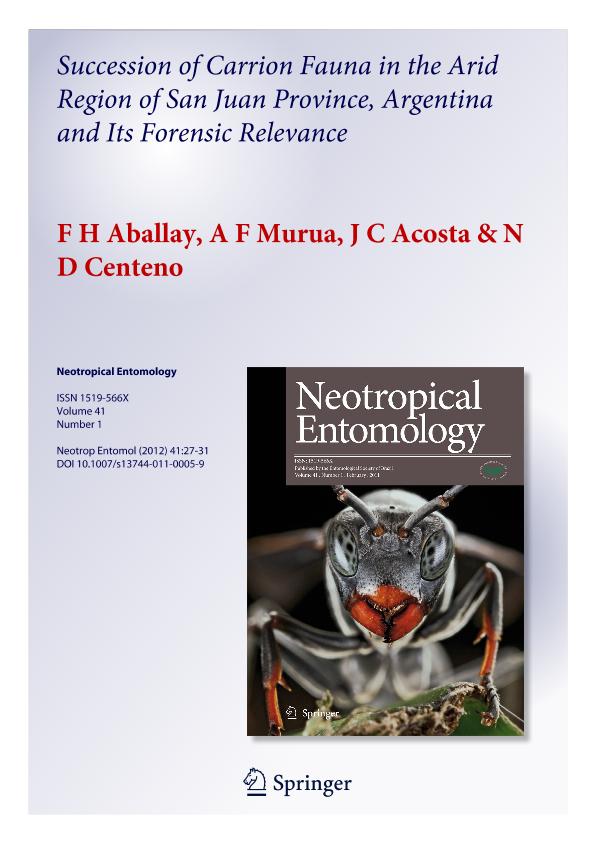Artículo
Succession of Carrion Fauna in the Arid Region of San Juan Province, Argentina and Its Forensic Relevance
Fecha de publicación:
02/2012
Editorial:
Sociedade Entomológica do Brasil
Revista:
Neotropical Entomology
ISSN:
1519-566X
e-ISSN:
1678-8052
Idioma:
Inglés
Tipo de recurso:
Artículo publicado
Clasificación temática:
Resumen
The succession of carrion fauna and the decomposition stages were studied in the arid environment of San Juan Province, Argentina (31°32′34. 7″ S; 68°34′39. 4″ W). Two pig carcasses (Sus scrofa) were placed in wire mesh cages, 100 m apart from each other. Each carcass was surrounded by pitfall traps, and a modified Malaise trap was placed above. Daily samplings were carried out to collect the insects present in the carcasses and the traps, and body and environmental temperature were measured. The main colonizer species was Chrysomya albiceps (Wiedemann) and its larvae were dominant over other Diptera. The first adult blowflies emerged at 8. 9 days. The time to reach the remains stage was 8 days shorter than for other South American sites. We recorded the early arrival of adult Dermestes maculates De Geer and Dermestes ater De Geer 2 days after the beginning of the assay, and larvae of these species were recorded 4 days after. We determined a 1. 5-day error in the postmortem interval estimation using the temperatures measured in the assay and those recorded by the nearest meteorological station. © 2012 Sociedade Entomológica do Brasil.
Archivos asociados
Licencia
Identificadores
Colecciones
Articulos(IADIZA)
Articulos de INST. ARG DE INVEST. DE LAS ZONAS ARIDAS
Articulos de INST. ARG DE INVEST. DE LAS ZONAS ARIDAS
Articulos(SEDE CENTRAL)
Articulos de SEDE CENTRAL
Articulos de SEDE CENTRAL
Citación
Aballay, Fernando Hernán; Murua, Fabricio Alejandro; Acosta, Juan Carlos; Centeno, Néstor Daniel; Succession of Carrion Fauna in the Arid Region of San Juan Province, Argentina and Its Forensic Relevance; Sociedade Entomológica do Brasil; Neotropical Entomology; 41; 1; 2-2012; 27-31
Compartir
Altmétricas




